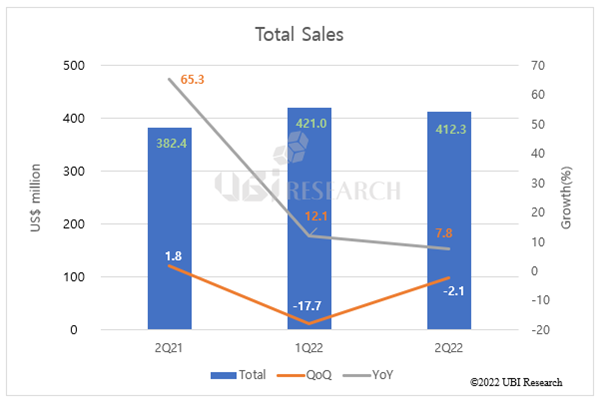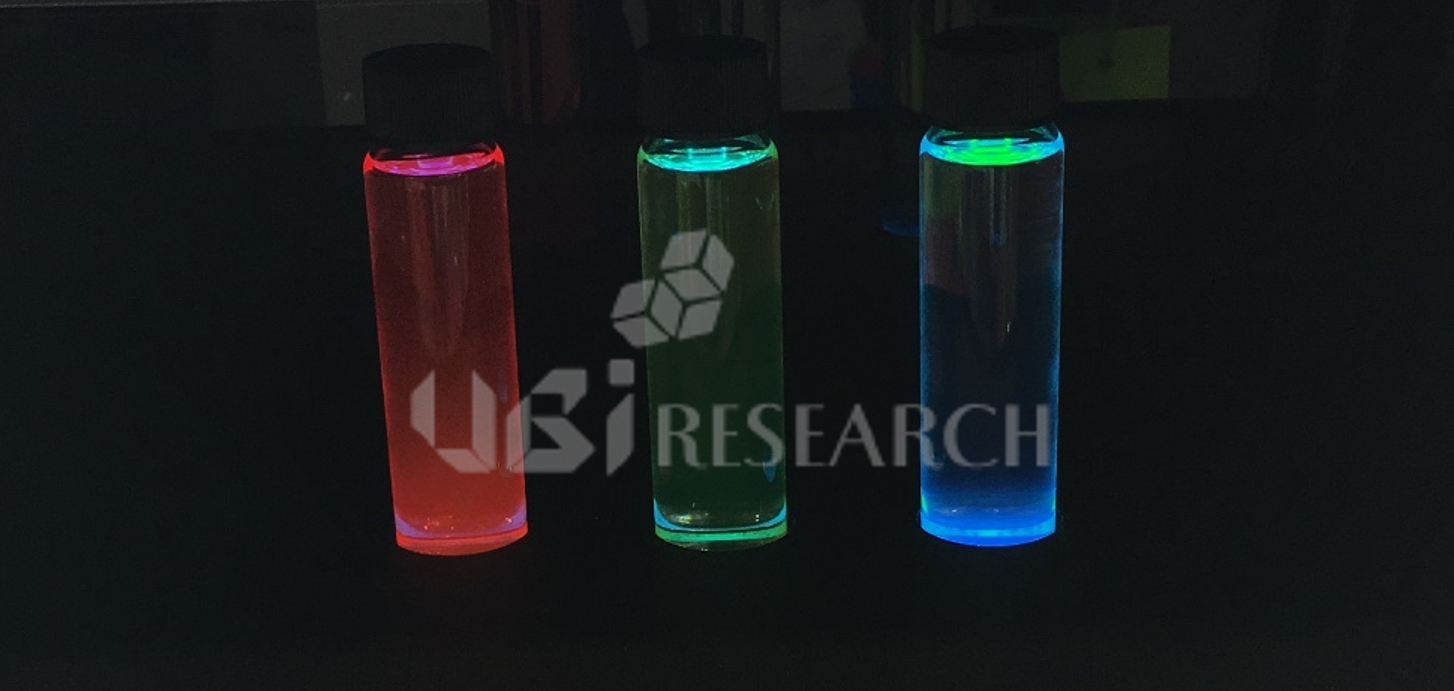2Q22 OLED Light-Emitting Material Market $4.12 billion, up 7.8% from the Same Quarter Last Year
According to the “3Q22 OLED Emitting Material Market Track” published quarterly by UBI Research, purchases of OLED light-emitting materials in the second quarter of 2022 amounted to $4.12 billion.
In the second quarter of 2022, the OLED light-emitting material market decreased by 2.1% compared to the previous quarter and increased by 7.8% compared to the same quarter last year. Overall, there was a decrease in panel shipments of Samsung Display and LG Display due to the off-season, but sales did not decrease significantly from the previous quarter due to rising exchange rates and the supply of new materials.
In the small OLED panel market, Samsung Display’s second-quarter purchase of light-emitting materials fell 2.2 % from the previous quarter to $1.52 billion, BOE fell 11.7% to $53.1 million, and LG Display fell 12.6% from the previous quarter to $39.7 million.
For OLED TVs, LG Display’s second-quarter purchase of light-emitting materials was $77.3 million, similar to the previous quarter, while Samsung Display’s purchase of materials for TVs was $28.3 million, up slightly from the previous quarter.

2Q 2022 OLED Emitting Materials Market
Sales of OLED light-emitting materials for each quarter were classified by layer, and the expected sales until 2026 were expressed as a 100% cumulative graph.

Sales and the market share Forecast by OLED method
The OLED light-emitting material market is predicted to be $1.81 billion in 2022 and $2.5 billion in 2026. As shipments of WRGB OLEDs are expected to exceed 20 million units in 2026, purchases of light-emitting materials for WRGB OLEDs are expected to reach $900 million in 2026 from $4.3 billion in 2022. As the RGB 2stack market for IT grows, it is expected to reach $53.4 million in 2024 and $190 million in 2026.
Sales of luminescent layer and common layer were investigated to identify the overall market of light-emitting materials, and performance was analyzed by dividing them into countries, panel companies, applied products, layers, and OLED methods (RGB, WRGB, and QD-OLED). In addition, OLED market information up to 2026 was predicted by predicting the usage and sales of light-emitting materials by each company over the next five years. The Market Track Quarterly Report provides necessary information to industry workers who lead OLED industries.


 3Q22 OLED Emitting Material Market Track Sample Download
3Q22 OLED Emitting Material Market Track Sample Download






